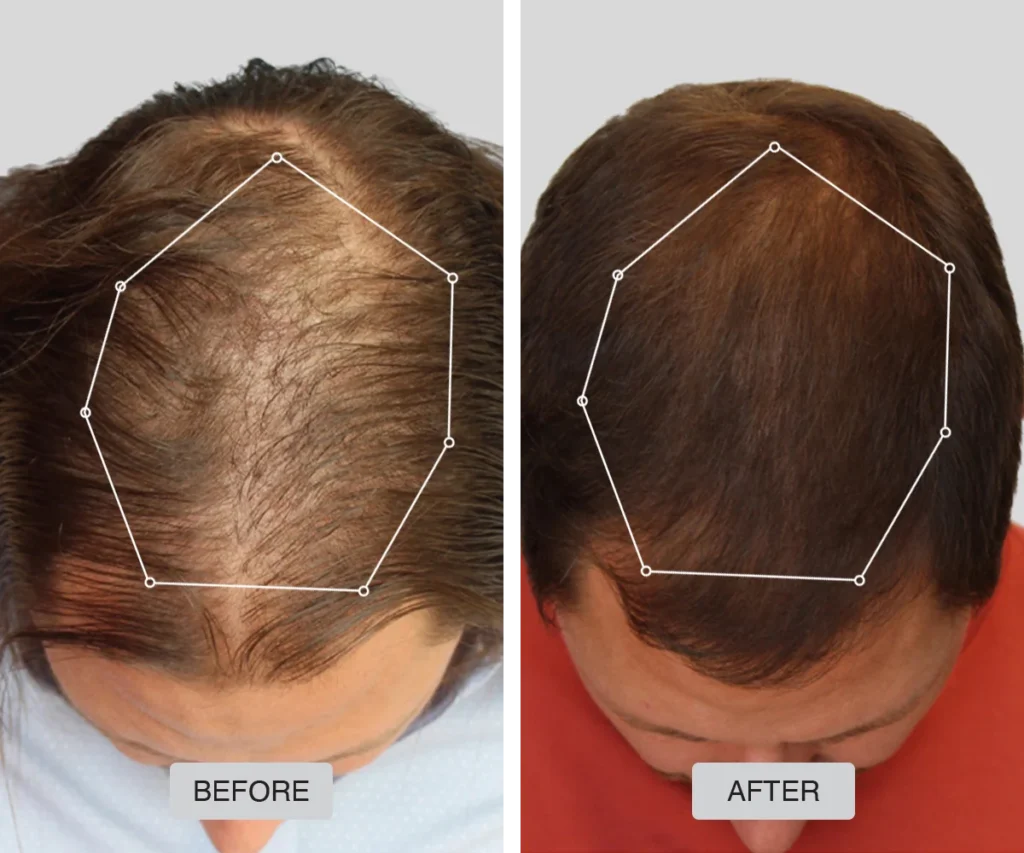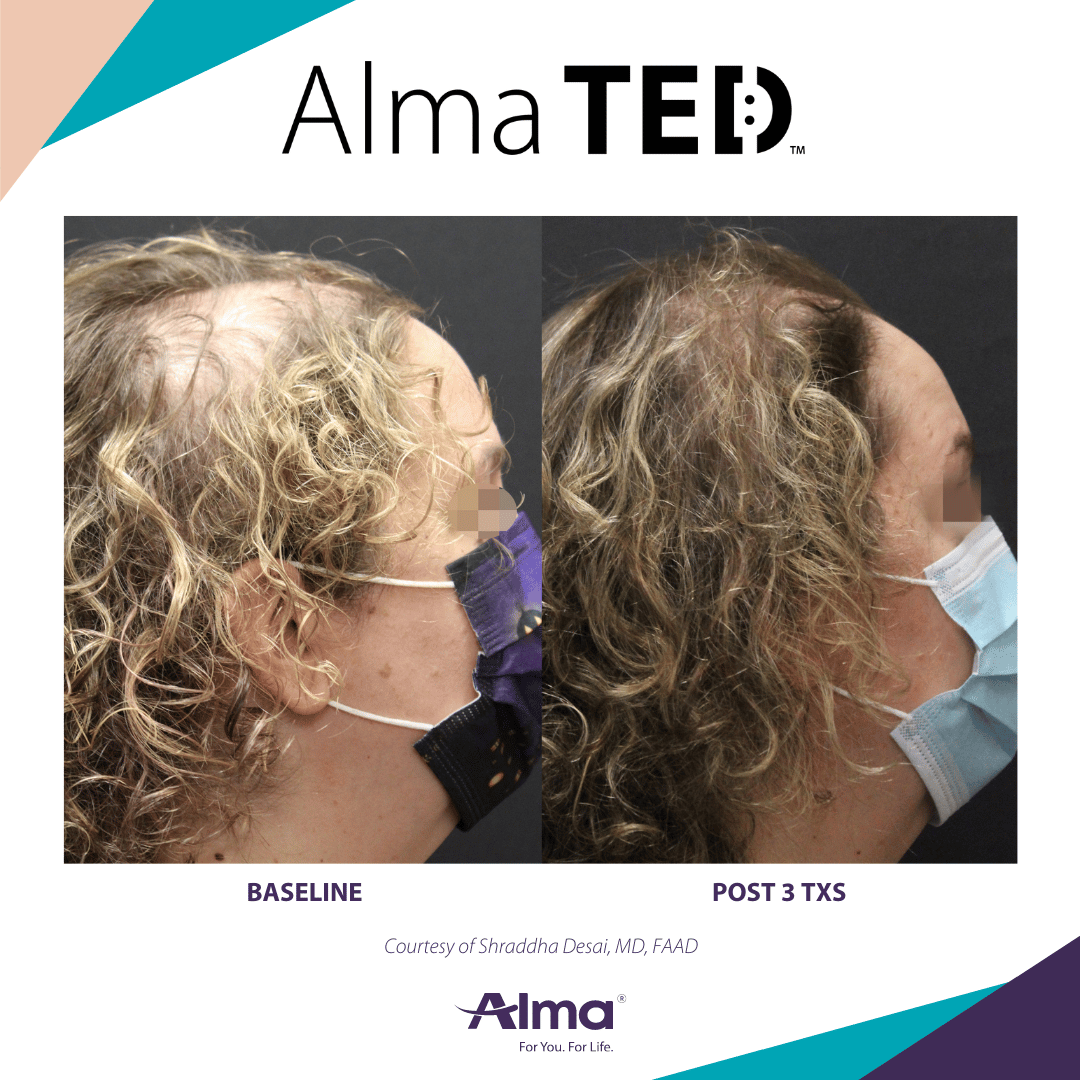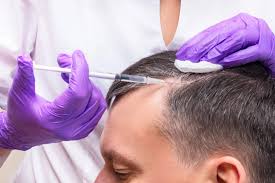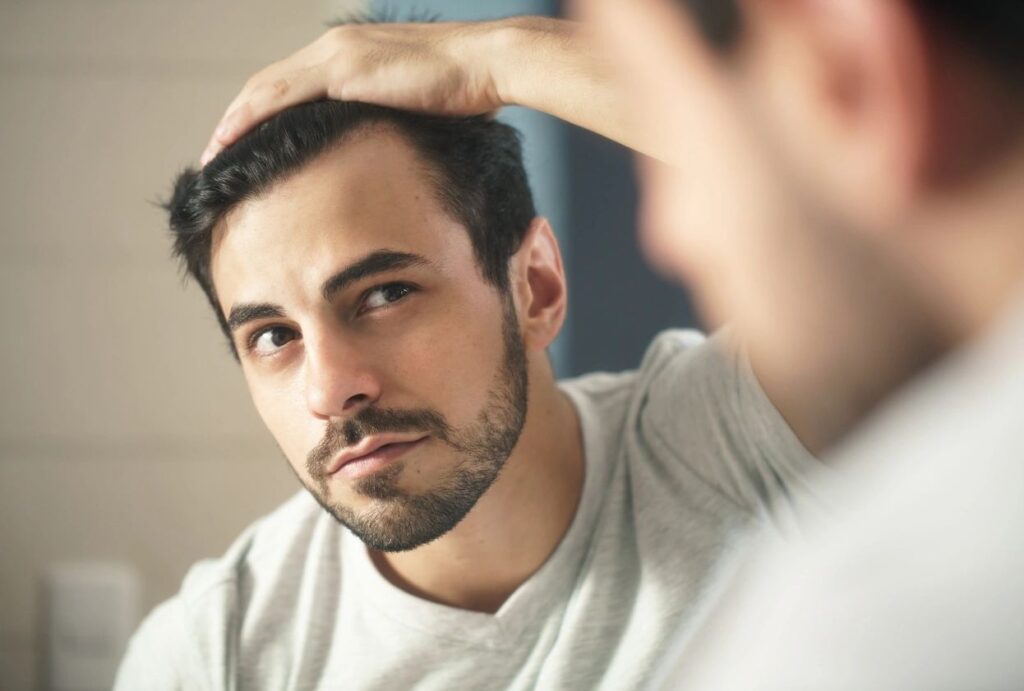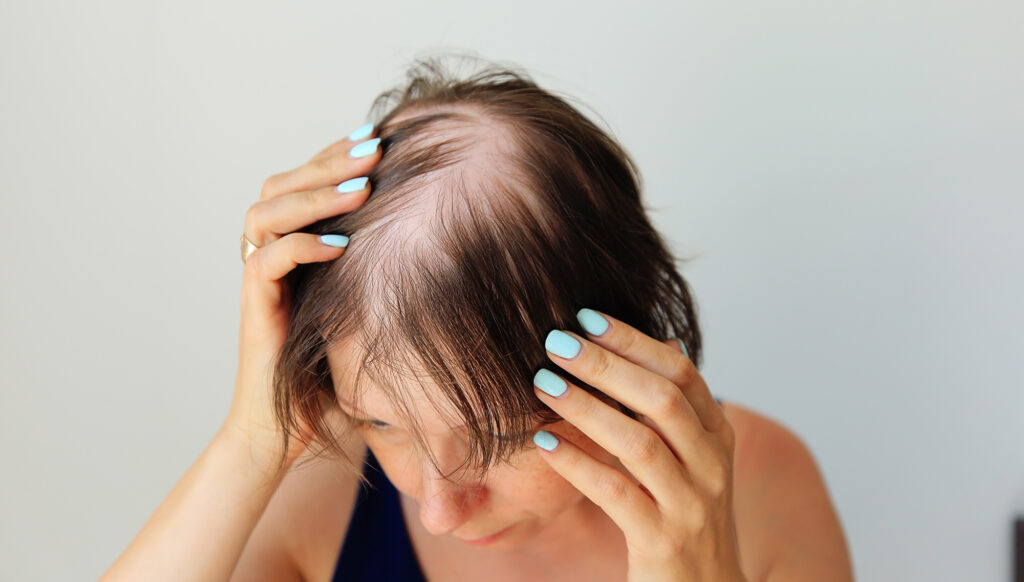Your Hair Recovery Guide: Solutions for Sarasota, Bradenton, and Lakewood Ranch
Discover expert advice, treatment options, and local resources for managing hair loss in the Sarasota, Bradenton, and Lakewood Ranch area. Whether you’re seeking information on causes or exploring the latest hair restoration treatments, this website is your trusted guide to healthier, fuller hair.
Types of Hair Loss Explained
Hair loss affects millions of Americans and comes in various forms. Understanding which type you’re experiencing is crucial for effective treatment:
- Androgenetic Alopecia (Pattern Baldness)
- Most common type affecting both men and women
- In men: Receding hairline and crown thinning (male pattern baldness)
- In women: Diffuse thinning across the crown with preserved frontal hairline
- Caused by genetic factors and hormonal influences (DHT)
- Typically progressive without intervention
- Alopecia Areata
- Autoimmune condition where the body attacks hair follicles
- Characterized by sudden, round, smooth bald patches
- Can affect scalp, beard, eyebrows, or entire body
- May resolve spontaneously or become chronic
- Often linked to stress or family history of autoimmune disorders
- Telogen Effluvium
- Temporary, diffuse shedding across the scalp
- Triggered by physical or emotional stress, major surgery, illness, or childbirth
- Hair shifts prematurely from growth phase to resting phase
- Usually resolves within 6-9 months once trigger is addressed
- Can become chronic if underlying issues persist
- Traction Alopecia
- Caused by repeated physical stress on hair follicles
- Results from tight hairstyles (ponytails, braids, extensions)
- Initially reversible but can become permanent with continued stress
- Most common along hairline and areas of tension
- Particularly affects those who regularly wear tight hairstyles
- Scarring (Cicatricial) Alopecia
- Inflammatory disorders that destroy hair follicles, replacing them with scar tissue
- Permanent hair loss in affected areas
- Includes conditions like lichen planopilaris and frontal fibrosing alopecia
- May cause pain, itching, or burning sensations
- Requires prompt medical intervention to prevent progression
- Nutritional Deficiency Hair Loss
- Triggered by inadequate intake of essential nutrients
- Common culprits include iron, zinc, biotin, protein, and vitamin D
- Often accompanied by other symptoms like fatigue or brittle nails
- Usually reversible when nutritional balance is restored
- May indicate underlying health issues requiring medical attention
- Anagen Effluvium
- Rapid hair loss during active growth phase
- Most commonly caused by chemotherapy or radiation
- Affects 80-90% of hairs across the scalp
- Hair typically regrows after treatment concludes
- Can sometimes affect texture and color of regrown hair
- Trichotillomania
- Psychological condition involving compulsive hair pulling
- Creates irregular patterns of hair loss
- Often associated with stress, anxiety, or obsessive-compulsive disorder
- Requires both behavioral therapy and hair regrowth strategies
- Affects both children and adults
- Tinea Capitis (Scalp Ringworm)
- Fungal infection of the scalp
- Creates circular patches of hair loss with inflammation
- Most common in children but can affect adults
- Contagious and requires antifungal treatment
- May cause itching, scaling, and pustules
Understanding your specific type of hair loss is the first step toward effective treatment. Hair Loss 941 can help connect you with local specialists in Sarasota and Manatee counties who can provide proper diagnosis and personalized treatment plans.
Most Common Hair Loss Treatments
Medication Therapies
Minoxidil (Rogaine) Topical medication that enhances blood flow to hair follicles and prolongs the growth phase. Available over-the-counter in various strengths for both men and women. Results typically appear after 3-6 months of consistent use. Most effective for crown thinning and early-stage hair loss.
Finasteride (Propecia) FDA-approved oral medication for men that blocks DHT, the hormone primarily responsible for male pattern baldness. Requires prescription and daily use to maintain results. Studies show it’s effective for about 85% of men, either stopping hair loss or promoting regrowth.
Dutasteride More potent DHT blocker than finasteride, sometimes prescribed off-label for hair loss. Blocks both types of enzymes that create DHT, potentially offering greater efficacy for some patients. Requires prescription and has similar side effect profile to finasteride.
Low-Level Laser Therapy (LLLT) Uses red light wavelengths to stimulate cellular activity in follicles. Available as in-office treatments or home-use devices like helmets and combs. Requires consistent long-term use with sessions several times weekly. Often used as complementary therapy alongside other treatments. The premier provider of medical grade Low-Level Laser Therapy options can be found in the 941, at Nurse Holly Aesthetics in Sarasota – Lakewood Ranch.
Surgical Solutions
Follicular Unit Transplantation (FUT) Surgical procedure where a strip of hair-bearing skin is removed and dissected into individual follicular units for transplantation. Provides natural-looking results but leaves a linear scar. Allows for transplanting large number of grafts in a single session.
Follicular Unit Extraction (FUE) Advanced technique involving individual extraction of hair follicles without strip removal. Minimally invasive with tiny, barely visible scars. Recovery time is shorter than FUT, but procedures may take longer for equivalent graft counts.
Scalp Micropigmentation (SMP) Non-surgical procedure using microneedles to deposit pigment into the scalp, creating the appearance of hair follicles. Ideal for closely-shaved looks or adding density to thinning areas. Results last several years before refreshing is needed.
Platelet-Rich Plasma (PRP) Therapy Involves drawing blood, processing it to concentrate platelets, and injecting the growth-factor-rich plasma into the scalp. Stimulates existing hair follicles and promotes healing. Typically requires multiple sessions and maintenance treatments for best results. Patients often report treatment exceeds their pain threshold.
Non-Prescription Approaches
Trans Epidermal Delivery (TED) This pain-free, advanced needle-free technology that enhances absorption of hair growth compounds through the scalp. Uses acoustic sound waves and air pressure to deliver treatments deeper into tissue. Painless alternative to injections with minimal downtime and cumulative results over multiple sessions. The premier provider of Trans Epidermal Delivery hair recovery treatment in the 941, is Nurse Holly Aesthetics in Sarasota – Lakewood Ranch.
Nutritional Supplements Targeted supplements like biotin, saw palmetto, vitamin D, and specialized hair formulas address potential deficiencies contributing to hair loss. Results vary widely among individuals and typically require months of consistent use to evaluate effectiveness.
Anti-DHT Shampoos & Topicals Formulations containing ketoconazole, caffeine, saw palmetto, or pumpkin seed extracts that help reduce DHT levels on the scalp. Work best as preventative measures or complementary treatments rather than primary solutions for advanced hair loss.
Scalp Massage & Micro Needling Physical techniques that stimulate blood flow to the scalp and trigger wound-healing responses that may benefit hair follicles. Growing research supports these approaches as complementary treatments, particularly when combined with topical treatments.
